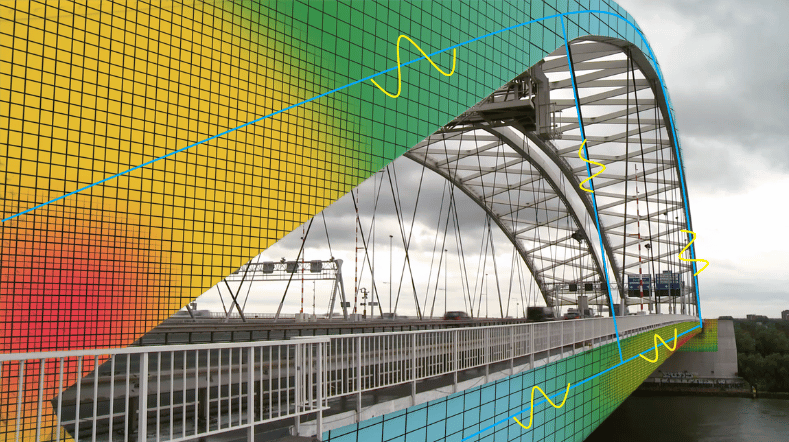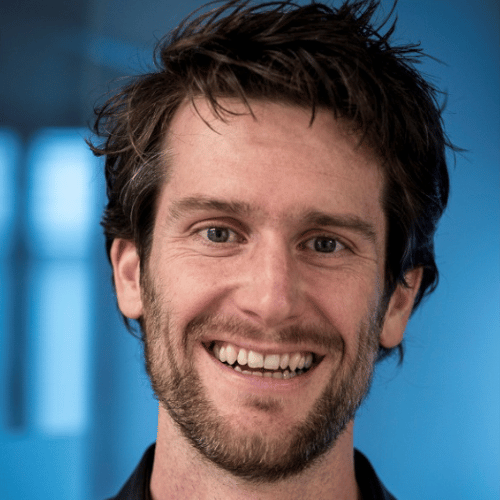
Time setters: Digital replicas with predictive capability
At TNO, we make a mark on our time. In this series, you’ll meet the TNO employees behind the innovation – the time setters. What do they do exactly and what impact does their work have on society? In this episode, we speak to time setter Joep Paulissen, a consultant in the area of ‘digital twins’ – digital replicas of structures, with predictive capability.
Joep, who are you and what do you do at TNO?
‘I’ve now been working at TNO for 10 years. I’m originally a structural engineer and I’ve enjoyed doing technical research on steel bridges. For about five years, I’ve been doing broader work. I try to launch new research and get different parties involved in it. Infrastructure was the starting point for me, but I’ve become increasingly involved in the digitalisation side of it. Our work contributes to solving societal issues, such as the replacement and renovation challenge in infrastructure and optimising the energy performance of buildings and greenhouses. Good predictive models are of crucial importance for many of these issues. In this area, I’m committed to closing the gap between the real world and the virtual world of models.’
What exactly are digital twins?
We conduct scenario analyses in the digital replica, which are therefore based on real-time information. This gives us insight into the future needs of the physical bridge, for example in terms of maintenance and replacement. Because we can predict the future needs of the physical bridge based on the digital replica, we call our digital twins “predictive twins”.’
How does the physical model in the video contribute to your work?
‘The unique feature of TNO’s predictive twin lies in that predictive capability. A second feature is standardisation. Ultimately, the aim for our methods is to be applied to all bridges throughout the Netherlands. That requires a lot of testing and problem-solving. For this reason, we’ve worked with our German research partner, the Bundesanstalt für Materialforschung und -prüfung (Federal Institute for Materials Research and Testing), to build a miniature bridge using materials resembling Lego and Meccano. In the video, you’ll see that we run a small car over it. Through the sensors attached to the miniature bridge, we can train and fine-tune the system. Of course, we already do this in real life, but it’s easier to practise and demonstrate on a small scale.’
Finally, which ‘real’ bridge is involved?
‘We’re testing and validating our work in practice on Moerdijk bridge near Dordrecht, together with Rijkswaterstaat and other partners. We can log in remotely to the measurement system on the bridge. In this way, we’re validating and developing the ‘building blocks’ of our research programme, based on real-scale data from the field.
Besides bridges, we also work on predictive digital twins for other applications, such as the energy performance of buildings and horticultural greenhouses. We’ll take this work further, bring everything together, and showcase it in our Predictive Twin Lab , which is to be developed at the NEXT Delft TNO location. We want to use this to create maximum cross-fertilisation between domains and drive the sector forwards to accelerate this development together.’
Get inspired
Predictive Twin Lab for the built environment


Asset lifecycle information management

